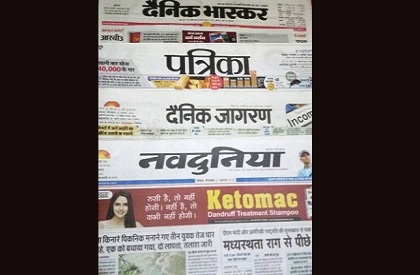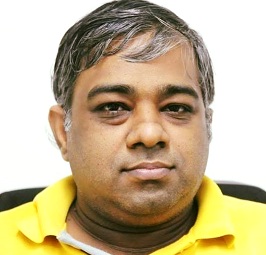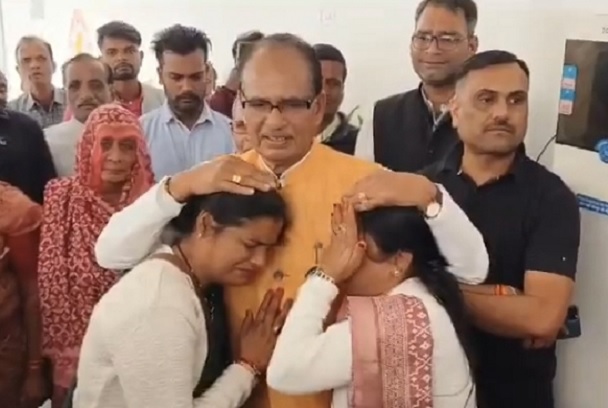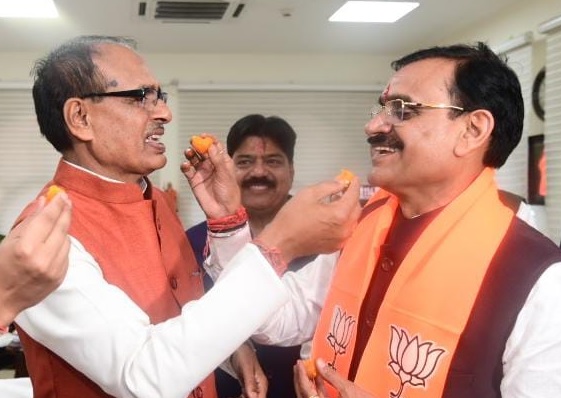Role of Hindi media in spreading communalism, supporting right-wing narrative & moulding public opinion

Shams Ur Rehman Alavi
NewsBits.in
The role of vernacular newspapers, especially, Hindi media, in the growth of communalism in North India has been well-documented. From the Ram Temple movement to the lynchings over cow, Hindi media has often received flak for biased reporting.
But little has been done to address the situation. Despite books, studies and research on the role of sections of vernacular press in spreading canards and driving wedge among communities apart from fanning hatred or propaganda that has resulted in riots, the situation hasn't changed much. Rather, it has worsened in recent years.
It is a known fact that just a few major incidents of crime under a RJD, BSP, SP or Congress government immediately lead to headlines suggesting 'Jungle Raj’. But lynchings and horrific crimes on a regular basis in states ruled by BJP or other right-wing parties (alliances) never get the same attention and headlines would not have the word 'Jungle Raj'.
The same is true for corruption or scams. The vernacular press will go all out to defame a state government despite doing well on developmental front. Yet, it can also defend and project as progressive a state government that fails to deliver and is mired in scams, just in case it is headed by a right-wing party or its alliance partner. That's the misuse of power of press.
But what exactly makes the vernacular press biased? Though it is a long story, it needs to be told. Go back to the turbulent eighties when BJP was riding high on Ram Temple movement. It was Hindi press in North India that gave unprecedented coverage to BJP, VHP and Sangh affiliates' demands. This led to a movement and support grew for the right-wing parties that were able to strengthen their base.
When six persons died as per official figures in Ayodhya, Hindi newspapers termed it as a bloodbath. The figures of deaths were exaggerated--not two or three times, rather they claimed that hundreds had died. This led to a wave of anger. With 'prestigious' newspapers that are ‘trusted’ in society, publishing incendiary reports, masses accepted that this was nothing but an attack on Hindus.
How the vernacular papers managed to turn people against 'secular parties'
It is not that ‘sections’ of Hindi press or certain papers but ‘mainstream’ Hindi press has consistently shown its bias and played its role in projecting Hindutva while condemning secularism, even if in process it has shown disregard towards constitution.
During communal riots too, the situation remains the same. Either it's Godhra or Muzaffarnagar killings, the newspapers' stands are clear. Similarly, the vernacular papers ignore incidents of violence by right-wing extremists who remain mere 'troublemakers' and often crimes like mob attacks or lynchings are not even on front page (tucked away in a corner in an inside page or even not carried).
However, the same papers toe the right-wing groups' line when it comes to issues like Kashmir or any AMU related controversy. As newspapers and TV channels rarely got censured even for inflammatory reports, they continue to fan hatred and injected communalism in the society. False reports that led to communal attacks in different cities of the country, are just a case in point.
Unlike English media, the Hindi press traditionally had right-wing leanings or a softness towards the ‘Hindu cause’. Initially, a few columnists or reporters were seen as aggressive right-wingers. But over the years, papers found it more 'profitable' and realized that pandering to communal sentiments, always helped gain attention.
Besides, in the last few decades, Sangh ensured that 'ideologically committed' journalists entered Hindi media. With little regulation (or even self-regulation) and failure of successive regimes to check false reporting that causes communal divide in society, the right-wing's hold on Hindi media has only grown stronger. The consequence is that words like 'secular' and 'plural' have been made to look as ugly.
Newsroom composition in Hindi media: Lack of diversity and representation
There is little representation of backwards, dalits, minorities and tribals. With almost 80% of population missing in the newsrooms, the media houses reflect the views of a particular section of the society. This remains unchanged.
Not just Congress, even the socialists who remained in power for decades in the populous states of UP and Bihar, failed to see how vernacular media has shown its bias.
They couldn't start their own media houses or understand the gravity of the problem--how public opinion can be moulded by consistent propaganda and the misuse of media in the country. In fact, some of the leftist or centrist parties that earlier had newspapers in English as well as Hindi and other languages (in different regions) ignored their papers, resulting in their slow death.
In sharp contrast, the biggest papers in Hindi belt, kept growing and their affinity towards the right-wing kept getting stronger. Rather than focusing on development and social indicators, these papers lend credence to propagandists and fanatic elements' voices.
The political coverage in these newspapers is also on similar lines. The terminology used is clever--it can range from Jungle Raj to Sushasan, depending on who is at the helm, and helps people on the street form opinion.
These tactics have worked as repeated negative coverage prompts people to believe any regime as failing despite doing better on social indicators. However, poor performance can be overlooked in case of 'friendly regimes' that are made to appear as 'working wonders'.
Besides, by giving communal turn to reports, the vernacular press ensures that Indian electorate remains polarized, permanently. Fake stories like unfurling flag of an enemy nation in a locality, are immediately published without evidence, even if it is a traditional flag hoisted on a religious event.
During elections, it is common practice in eveningers and other papers to tell that 'voting percent was high in localities inhabited by Muslims' and photograph of veiled women are published at a booth to give credence. It helps in consolidation of other votes and polarization against Muslims, even if voting percentage in these areas is low.
Regional papers’ zeal in furthering the right-wing agenda
Many of these papers go a long way carrying the right-wing agenda. Much before any political party, they change names of towns and spellings on their own.
It may be ‘Alirajpur’, ‘Maqsudangarh’, Nisaarpur’, ‘Isagarh’, but the papers with mass circulation themselves change names to ‘Aalirajpur’, ‘Madhusudangarh’, ‘Nisarpur’ and ‘Ishagarh’, even though local residents may not use these names.
Also, in incidents of crime or even in foreign countries, the stories that will inflame passions within country are deliberately given front page coverage. This is on regular basis.
The situation is such that an incident in which a person killed by cow vigilantes may not get coverage in these local or regional papers at all (until it is all over social media and they are forced to carry a single column report) but an incident in Pakistan or Bangladesh gets a front page banner.
Even small events or occasions are used to give a communal angle. A memorandum against sale of mutton in open may be turned into a newspaper’s own campaign and giving it a colour as if eating non-vegetarian food is a sin (cleverly terming non-veg eaters as sinners and ‘otherizing them’), despite the fact that over 70% Indians are non-vegetarians. Further, papers have campaigned against opening slaughterhouses.
The focus is excessive on reports or issues linked to ‘Burqa’, ‘Fatwa’, ‘Triple Talaq’, ‘Madarsas’, ‘Missionaries’, ‘Religious Conversions’, ‘Love Jihad’ et al. These are aimed at negative portrayal of minorities, and to create a religious divide, that helps the right-wing spread its narrative.
When minority communities are vilifed and portrayed as 'others' or turned into enemy, the critical problems facing the country are just out of public eye. As a result, the masses remain stuck in debates over non-issues and the right-wing agenda keeps getting pushed further and further ahead.










